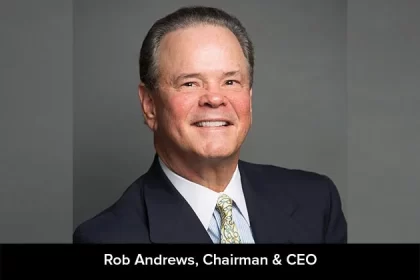For a global chief executive, few operational topics sprawl across as many risk vectors as moving money across borders. It’s no longer a back-office chore; it touches strategy, cash flow, pricing, customer trust, and regulatory exposure. Delays erode margin. FX swings and opaque fees distort unit economics. Fragmented data stifles forecasting. And when something goes wrong—an unexpected hold, a failed sanction screen, a mismatched invoice—the fallout lands squarely on the brand’s promise to pay quickly and fairly. In short: cross-border is where finance, compliance, and customer experience converge, and it demands executive attention.
Friction is structural, not accidental
The pain points aren’t just “bad process.” They’re the logical outcome of heterogeneous banking rails, divergent domestic rules, and inconsistent data standards. Each jurisdiction layers its own KYC, AML, tax, and reporting regimes atop legacy infrastructure that wasn’t designed for instant, 24/7 settlement. Even basics like beneficiary names, address formats, and purpose codes vary, forcing manual work and creating failure modes that only show up at scale. Accounts payable leaders know this reality intimately, which is why guides on the challenges AP teams face with cross-border payments resonate: they surface how approval chains, vendor onboarding, and invoice matching compound with banking friction to produce delays and disputes.
The visibility problem
“Where is the payment?” shouldn’t require a scavenger hunt. Yet cross-border transactions often disappear into a black box between initiation and receipt. Without end-to-end tracking and standardized reference data, treasury teams can’t tell whether a delay is due to sanctions screening, correspondent bank queues, currency cutoffs, or a formatting error. That uncertainty inflates working-capital buffers and pushes teams to over-hedge. Global policy work from the BIS Committee on Payments and Market Infrastructures has zeroed in on these visibility gaps, encouraging common data models, richer messaging, and more transparent service levels as prerequisites for real improvement.
Regulation and risk: necessary, but uneven
Safeguards like AML, counter-terrorist financing rules, sanction regimes, and fraud screening are essential. The challenge is their uneven application across jurisdictions. One country’s high-risk list doesn’t match another’s. Documentation accepted in one corridor is rejected in the next. Screening tools generate false positives that stall legitimate payments, while criminals probe the seams. Leaders need a two-track approach: strengthen controls while reducing needless friction. Frameworks and technical notes from organizations such as the International Monetary Fund provide a balanced view of how supervisory practices, data-sharing, and new technologies can reduce risk without freezing economic activity.
Data standards are the quiet unlock
If there’s a single lever with outsized impact, it’s data quality and structure. Rich, validated payment data—who’s paying, why, under what contract, with what tax treatment—travels better and clears faster. Adoption of modern message formats, consistent purpose codes, and canonical vendor records cuts down on repair requests and returns. This is not merely an IT exercise; it’s governance. Define the “golden record” for counterparties, enforce mandatory fields, and embed validation at capture. When payment reference data aligns with invoice and contract data, exceptions plummet and reconciliation time compresses from days to minutes.
FX and fees: price the journey, not the hop
Quoted FX rates and visible bank fees are only part of the story. Intermediaries may deduct lifting fees; some corridors add local taxes; unexpected correspondent charges can hit the beneficiary. The strategic move is to model the full route—time to funds, volatility exposure, and total cost per corridor—and then steer flows accordingly. For high-value corridors, negotiate service-level guarantees and transparent fee schedules. For volatile currencies, pair hedging with policy rules that trigger pre-funding or netting. Treat pricing as a portfolio decision, not a transaction-by-transaction scramble.
Operating model: central brains, local legs
World-class operations blend centralized policy with local execution. A global treasury center sets standards, owns banking relationships, curates approved rails, and monitors liquidity. Local teams handle jurisdictional nuances—tax documentation, cutoff times, and language with counterparties. Shared playbooks and a single source of truth for vendor and bank master data keep everyone aligned. The payoff is agility: the business can spin up a new market or vendor base without reinventing the payment stack each time.
Technology that actually moves the needle
It’s tempting to chase shiny solutions, but the practical stack has three pillars. First, orchestration: a layer that chooses the optimal rail per payment based on amount, currency, corridor, SLA, and risk flags. Second, intelligence: real-time screening, anomaly detection, and rules that escalate rather than block when confidence is low. Third, telemetry: end-to-end tracking with reason codes, so exceptions are explainable and fixable. Layer in real-time guidance at the agent or analyst desktop—akin to real-time assist—to cut handling time on exceptions, and you convert firefighting into a steady flow.
People and incentives
Payments are a team sport. Procurement sets terms that determine when and how you pay. Legal defines representations and warranties that drive documentation. Finance and ops enforce controls, and customer-facing teams promise timelines that ops must hit. Align incentives around total landed cost and reliability, not just nominal FX or headline bank fees. Publish corridor scorecards—speed, cost, failure rate—and make them visible to line leaders. Celebrate exception prevention, not heroics that clear a backlog at 2 a.m.
What “good” looks like
In a mature operation, payment instructions arrive clean the first time. Exceptions are triaged automatically with human-in-the-loop review when stakes are high. Treasury sees real-time positions across banks and currencies, with alerts for cutoff risks and sanction hits. Vendors are onboarded with verified banking details and clear dispute channels. Executives view a single dashboard that tracks cost-to-serve by corridor and connects payment reliability to customer NPS and supplier satisfaction. This isn’t theoretical; it’s the cumulative effect of standardization, orchestration, and relentless measurement.
A pragmatic roadmap
Start where the friction hurts most—typically the corridors with the highest volume of returns or the greatest working-capital drag. Clean the data, enforce message standards, and turn on end-to-end tracking. Pilot smarter screening and automated repair for a subset of payments. Negotiate transparency on fees and SLAs with your primary partners. Expand in waves, codifying lessons into policy and playbooks as you go. For a ground-level view of process pitfalls and remediation tactics, resources that detail the challenges AP teams face with cross-border payments are useful. For macro guidance on standards, interoperability, and policy direction, keep a close eye on the BIS Committee on Payments and Market Infrastructures and the International Monetary Fund’s work on fintech and payments.
The CEO’s role
Ultimately, this is leadership terrain. Set the ambition—faster, cheaper, safer—and make it measurable. Fund the plumbing, not just the promises. Demand clarity on where payments fail and why. Tie executive incentives to corridor reliability and working-capital turns, not just revenue growth. When cross-border payments become boring—in the best way—you’ve unlocked a compound advantage: happier customers and suppliers, healthier cash flow, and a business that can scale across borders without tripping over its own wires.










